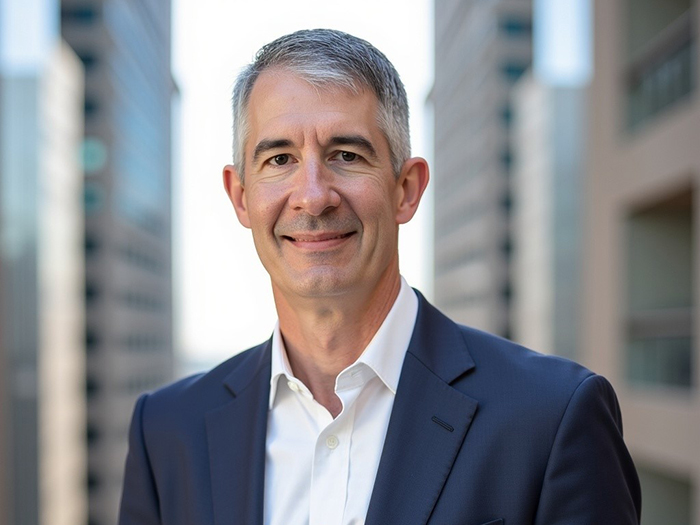Sponsored Content by Sompo
Three Trends Driving Up Casualty Loss Costs — and How Businesses Can Reduce Their Risk

Casualty claim loss costs have been on the rise. According to a new AM Best report analyzing losses in the first half of 2023, the U.S. property and casualty industry reported a $24.5 billion net underwriting loss for the first two quarters alone, on track to surpass the $26.5 billion in total losses recorded for all of 2022.
This is thanks in part to the confluence of several social and macroeconomic factors.
“In bodily injury cases — including construction accidents, auto accidents, premises liability cases et cetera — we are seeing the effects of social inflation, litigation funding and nuclear verdicts. These are increasing loss costs across all casualty portfolios. They are driving up claim severity as well as costs on more attritional frequency claims. Settlement expectations are increasing across the class of business, and that is putting a lot of pressure on insureds and carriers alike,” said Christopher Celentano, SVP, Head of Coverage & Complex Claims with Sompo International, North America.
While awareness is growing around these factors, it is safe to say that 2024 will bring more of the same. There are, however, steps that insureds can take to reduce their risk, especially with the help of a carrier that has expertise in the legal landscape.
Here’s how these trends are developing and impacting the casualty claims space today, and what to expect in 2024 and beyond:
1) Social Inflation

Christopher Celentano, SVP, Head of Coverage & Complex Claims with Sompo International, North America
Plaintiffs’ attorneys have been able to drive up verdicts by seeking higher amounts in noneconomic damages, including compensation for pain and suffering. They are well organized, and share litigation tactics with each other to play on a general sense among the public that safety is not top of mind for businesses. They not only convince the jury that the plaintiff and their family deserve a large sum, but that the defendant should be punished for putting profits over safety.
“Plaintiffs’ attorneys are imploring juries to essentially send a message to corporations that they have to be more careful, that they have to put safety above all else. Plaintiffs’ attorneys will ask the jury to put a price tag on someone’s life, and enjoyment of life, leading to these very significant verdicts.” Celentano said.
In most states, there are no caps on noneconomic damages, meaning attorneys are free to pursue exorbitant sums in excess of what a defendant’s insurance limits will cover.
“We’re seeing with increased frequency that attorneys will make immediate demands for the full insurance limits before there’s any significant discovery. The plaintiffs’ attorneys are very sophisticated in trying to create settlement pressure within the insurance tower.” Celentano said.
2) Litigation Funding
The prevalence of litigation funding continues to grow and is complicated by a lack of transparency.
“There are, by all measures, very significant sums of money pouring into this space. Various estimates cite that it is roughly a $20 billion USD to $30 billion USD industry. That takes into account all the different types of funding — from individual litigation loans to the funding of large-scale mass court cases, attorney advertising campaigns and claim aggregation. Litigation funding is behind much of the increased activity that we see in this space,” Celentano said.
Litigation funding originated in Australia and spread across Europe as a way to fund mass tort and class actions that were not attractive to most plaintiffs’ attorneys due to the risk involved. Because of this more limited scope outside the U.S., it is easier to identify when litigation is backed by funders. In the U.S., however, the barriers to entry into the plaintiffs’ bar are not nearly as high, and the risk isn’t as great, so this type of litigation is much more rampant.
“The litigation landscape in the U.S. is very large and varied, so it is harder to pinpoint exactly where litigation funding is playing a role. The funders and the plaintiffs’ attorneys backed by them don’t have to disclose the existence of the funding in connection with the litigation. There are some courts that will require it, and there are some courts that will allow it on a case-by-case basis, but it is not something that’s uniform,” Celentano said.
3) Nuclear Verdicts
Social inflation and litigation funding have both contributed to the explosion of nuclear verdicts — currently defined as any verdict exceeding $10 million USD. However, with sums in some cases reaching nine figures, that definition is in flux.
“Some have used the term ‘thermonuclear verdicts’ for awards over $100 million USD,” Celentano said.
While uncapped noneconomic damages are largely responsible for skyrocketing verdicts, economic damages are on the rise as well.
“Even verdicts based solely on the economic damages are creeping up. The cost of medical care continues to rise. Plaintiffs’ attorneys can also advocate for very substantial life care plans, which increases the overall case value,” Celentano said.
Attention-grabbing headlines and lack of transparency into a case’s resolution also embolden attorneys to seek ever-higher awards.
“Verdicts do get reduced post-trial. There was a very good case out of Minnesota recently where a federal judge took time to analyze how a $110 million jury award for pain and suffering award in medical malpractice case was ‘shockingly excessive,’ and should be reduced to $10 million because the verdict goes far, far beyond what is needed to compensate the plaintiff for his losses,” Celentano said.
“However, decisions like those don’t get as much publicity. We only see press releases about shocking numbers. The plaintiffs’ attorneys value those headlines a lot more than a couple of losses, because those headlines incentivize defendants to settle in other cases.”
Looking Ahead
Celentano doesn’t anticipate any immediate slowing of these trends in 2024.
“Every week, there is more news of another nuclear verdict in all types of cases, across all casualty lines of business,” he said.
But he has seen more efforts to inform the public about the trickle-down effects of big verdicts, pushes for tort reform and calls for greater transparency into litigation funding.
“I think we’ll see a more educated public as to how these trends impact them. These costs do have to get passed on to the consumers, and it is in their interest to make sure that there are protections in place to prevent abuse,” Celentano said.
Businesses and the defense bar are also becoming more vocal in calling for tort reform, and some states have passed business-friendly packages that offer more protections and policies to prevent abuse of the litigation system.
Similarly, Celentano expects to see more demands for the disclosure of sources of litigation funding. These efforts could take some wind out of plaintiffs’ attorneys’ sails and discourage the growing demand for huge verdicts.
How Insureds Can Protect Themselves
The best thing that corporations can do to limit their risk of incurring a nuclear verdict is to be informed and aware of evolving trends in the legal landscape and lean on the expertise of carrier partners, who have significant experience with such cases.
“The first step is always education. Corporations should have a good understanding of this risk and their exposure based on the claims that they have,” Celentano said.
While many insured corporations have excellent safety records and have achieved great litigation results over time, even they cannot rest on their laurels. Every business should stay vigilant in identifying cases with nuclear verdict potential and proactively mitigating that potential.
“It’s about early identification and rigorous preparation. When a claim has potential for severity, we make sure we have the right team in place to defend the case, understand the facts, who the witnesses are, what a trial is going to look like. We test and retest how that trial could actually proceed and fairly weigh the risks and benefits of taking the case through trial,” Celentano said.
“That happens on a claim-by-claim basis. Where we can help is through our view of the macro environment and seeing what is happening across the litigation landscape — to continue to share information and partner with our clients to get to the best results
To learn more, please visit https://www.sompo-intl.com/.
This article was produced by the R&I Brand Studio, a unit of the advertising department of Risk & Insurance, in collaboration with Sompo International. The editorial staff of Risk & Insurance had no role in its preparation.










